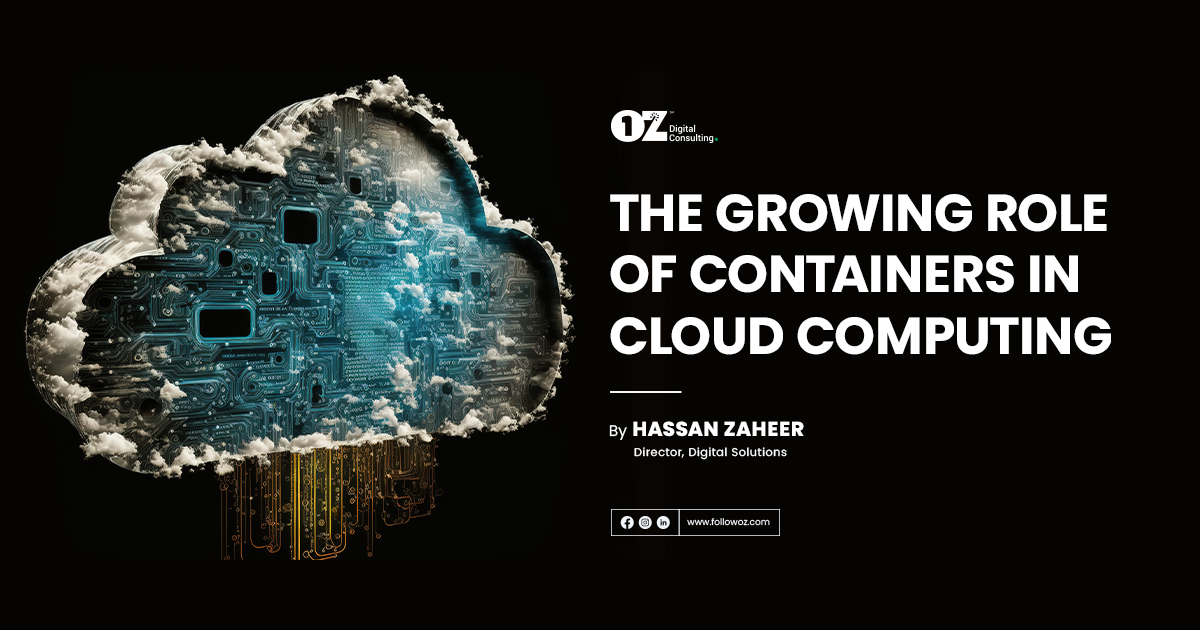By Hassan Zaheer – Director, Digital Solutions
Containers—which package all dependencies related to a software component and run them in an isolated environment—are used to abstract applications from the physical environment in which they are running.
This is important because it means applications deploy consistently in any environment—whether that is a public cloud, private cloud, or bare metal machine. Containerized applications are also easier to migrate to the cloud and make it easier to leverage the extensive automation capabilities of the cloud.
This is to say: Containerized applications can be efficiently deployed, cloned, or modified using APIs provided by the container engine or orchestrator.
But where did all of this begin? And how can it be best-taken advantage of?
Read on to find out…
Cloud Containers: A Brief History
Container technology, introduced as part of Linux, began with the separation of partitions and chroot processes. Modern container engines take the form of application containerization (such as Docker) and system containerization (such as Linux containers).
Containers rely on isolation, controlled at the operating system kernel level, to deploy and run applications. Containers share the operating system kernel and do not need to run a full operating system—only the necessary files, libraries, and configuration to run workloads. Further, the host operating system limits the container’s ability to consume physical resources.
In the cloud, a common pattern is to use containers to run an application instance. This can be an individual microservice or a backend application such as a database or middleware component.
Containers make it possible to run multiple applications on the same cloud virtual machines (VMs) while ensuring that problems with one container do not affect other containers or the entire VM.
Containers are becoming increasingly important in cloud environments. Many organizations are now considering containers as an alternative to VMs, which were traditionally the preferred option for large-scale enterprise workloads. (More on this below.)
The following use cases are especially suitable for running containers in the cloud:
- Microservices. Containers are lightweight, making them well-suited for applications with microservices architectures consisting of many loosely coupled, independently deployable services.
- DevOps. Many DevOps teams build applications using a microservices architecture and deploy services using containers. Containers can also be used to deploy and scale the DevOps infrastructure itself—CI/CD tools, for example.
- Hybrid and multi-cloud. For organizations operating in two or more cloud environments, containers are highly useful for migrating workloads. They are a standardized unit that can be flexibly moved between on-premise data centers and any public cloud.
- Application modernization. A common way to modernize a legacy application is to containerize it and move it as-is to the cloud—a model known as “lift and shift.”
You may, of course, then ask: “How can I run containers in the cloud?”
Below are several types of services you can use to do just that…
- Hosted container instances let you run containers directly on public cloud infrastructure, without the intermediary of a cloud VM. An example is Azure Container Instances (ACI).
- Kubernetes as a Service (KaaS) provide Kubernetes, the most popular container orchestrator, as a managed service and allow you to deploy clusters of containers on the public cloud. An example is Google Kubernetes Engine (GKE).
- Containers as a Service (Caas) manage containers at scale, typically with limited orchestration capabilities. An example is Amazon Elastic Container Service (ECS) or Amazon Fargate.
Virtual Machine & Container
In most cloud computing environments, the basic unit used to deploy workloads is a virtual machine (VM). Like containers, VMs are independent computing environments abstracted from the hardware. Unlike containers, VMs require a full copy of the operating system to run.
VMs can be used to run guest operating systems differently from the host system, so if the host is running Windows, the VM can run Linux or any other OS. In many technical scenarios, VMs provide improved isolation and security compared to containers.
However, a VM is essentially a standalone machine with its own operating system—which means it takes a lot longer to start up and run than a container. VMs images, which are used to create new VMs, are heavier than container images and more difficult to automate.
In the cloud, the most common scenario is running containers on top of compute instances, which are technically virtual machines. Cloud providers are now offering the ability to run containers directly on their bare metal servers, without VMs as an intermediary, a model known as “container instances.”
Common Challenges and Potential Solutions
1. Migration
Containers can significantly reduce costs, it’s true.
That said, in traditional computing environments it can often be difficult to transition existing applications to containers. In many organizations, IT staff do not have container experience and need to be trained or assisted by consultants. Cloud computing on its own can raise technical challenges for many operations teams—with containers may add another level of complexity.
As with any technology shift, organizations and technical teams must adapt to cloud-native technology.
The container ecosystem offers a variety of tools that can make adoption easier, including managed services that emphasize swift onboarding and ease of use.
2. Container Networking
Container networking can be highly complex.
And this complexity can sometimes lead to security issues.
In a containerized environment, you cannot use traditional networking techniques. Container networking uses standards such as Container Network Interface (CNI) and is managed by employing overlay networks, creating isolated, private networks for communication between containers and hosts.
In the cloud, things can become even more complicated: Cloud providers offer their own terminology for networking—such as virtual private clouds (VPC) and security groups—to control access.
When running standalone containers on the cloud, you will need to manage their networking and make sure it aligns with the private networks you have set up within the public cloud. If you get things wrong, you can end up exposing containers to the public Internet.
Most organizations solve these concerns by utilizing managed container services or adopting orchestrators such as Kubernetes or Nomad, which have built-in networking management for clusters of containers.
3. Container Security
Cloud providers use a shared responsibility model, where the cloud provider is responsible for securing the underlying infrastructure.
And customers are responsible for correctly configuring security controls to secure their workloads and data.
As far as containers are concerned, the cloud provider assumes responsibility for the underlying container hosts and the hypervisor, while containers themselves and the persistent storage volumes they use must be secured by your organization.
Securing containers includes several aspects:
- Container images can contain vulnerable software components or malware.
- The default configuration of container engines like Docker provides extensive privileges. Attackers can leverage the shared kernel to infect other containers, and the host operating system, if containers are not properly locked down.
- Containers are short-lived, making it more difficult to keep track of them, monitor them, and identify security issues.
Security is crucial during the entire lifecycle of a container. Scan container images to ensure they are safe, use configuration best practices to lock down containers and eliminate unnecessary privileges, and restrict access and network traffic to a minimum. Finally, keep track of running containers using monitoring and security tools that support containerized environments.
Ready to Get Started?
From maximizing current technology assets and keeping on top of the latest cybersecurity developments to facilitating cloud migration and integrating new technologies, holistic IT planning and management is critical to ensuring your hardware, software, and human resources are optimized and effective.
Let OZ place our experts and quarter-century of experience at your disposal—reach out today!



